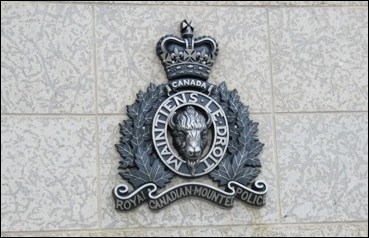A drug and gang forum spearheaded by Jacob Pete, a Little Pine First Nation elder, was held Nov. 22 and 23 at the Dekker Centre in North Battleford. The forum’s title is Reclaiming Miyopimatisiwin: What gets in the way? (Miyopimatisiwin translates as “the good life.”) Pete says there is gang and drug activity in North Battleford and in the surrounding area, and believes such problems can begin to be solved with the help of Indigenous traditions, spirituality and customs.
Understanding drug and gang activity was the topic of a recent forum, and many speakers from different backgrounds, including First Nation administration, police, and law and health professionals, offered evaluations of the situation and possible solutions.
Cst. Steve Evans said he’s been with the RCMP for 14 years and works in areas near the Battlefords, including Lloydminster, Pierceland, Meadow Lake and Spiritwood.
Evans said the purpose of the presentation was educational and said he didn’t want information to be sensationalized.
“Gangs thrive on fear,” Evans said. “The more notoriety, the more publicity we give them, [the more it] makes them more powerful.”
According to Evans, Indigenous street gangs emerged in the province in the late 1980s and early 90s. Efforts to curb gang organization at Stony Mountain Penitentiary in Winnipeg led to authorities moving gang members to other jails.
Evans said such activity “slowed down for some time,” but then gang activity “spread across Canada.”
Evans said being in a street gang is not in itself illegal, but “where it becomes illegal is when you start to commit criminal offences.”
The Criminal Code considers a criminal organization as three or more people acting together to commit serious offences. A serious offence is considered to be an indictable offence in which the maximum punishment for imprisonment is five years or more.
A criminal organization doesn’t include a group randomly formed for the immediate commission of a single offence.
Criminal Intelligence Service Canada has six criteria for validation of street gang membership, the most important of which, Evans said, is “involvement in a gang-motivated crime.” Other criteria include observed association with gang members and symbolic gang identification, such as paraphernalia.
The CISC criteria, Evans said, is “restrictive of how we classify” those involved with gangs.
Data regarding gangs was compiled in 2002, Evans said, but data collection can be challenging for reasons including difficulties accessing those involved. Some of the data (such as numbers featured in the presentation and in this article) are outdated.
Jails foster gang activity.
“We can’t talk about street gangs without talking about our correctional facilities,” Evans said, adding jails in the province often feature a number of different active gangs behind bars.
Gang crime includes armed robbery, assault, trafficking and murder. Gangs have hierarchies and use rituals such as minutes, in which initiates are beaten for 60 seconds. A beating can also occur upon exiting a gang.
“People usually get to the age where they realize they don’t want to do this anymore, they don’t want to be involved with the violence,” Evans said, adding raising a family is often a motivation to exit gangs.
Upon asking many gang members, Evans said, people say they join gangs because the group provides support and a sense of belonging when families don’t.
“The unfortunate part is the group is not out for you, the group is out for themselves and the higher ups,” Evans said. “You as a member are just a pawn in the game.”
Evans said it’s a misconception females aren’t involved, and “are just as involved as males are” regarding such things as violence and drugs.
During a question session, a man in the crowd said he found the information to be too old.
“We have a lot of concerns as parents and grandparents, and to have a good plan moving forward we need updated information.”
Evans said there isn’t enough research on the groups, in part because of the frequent movement of those involved, such as people falling out of favour with one group and associating with another.
Evans said police are “always willing to take information” about gang activity.




